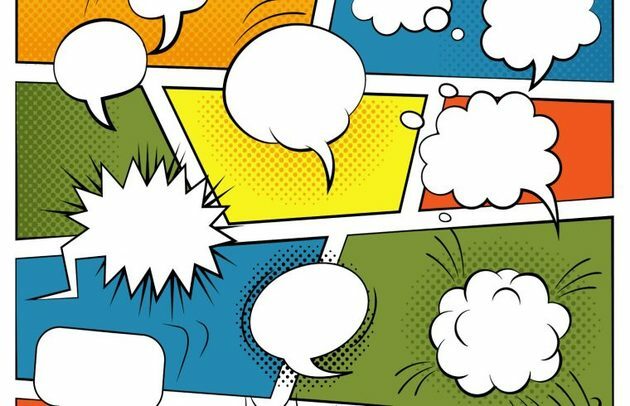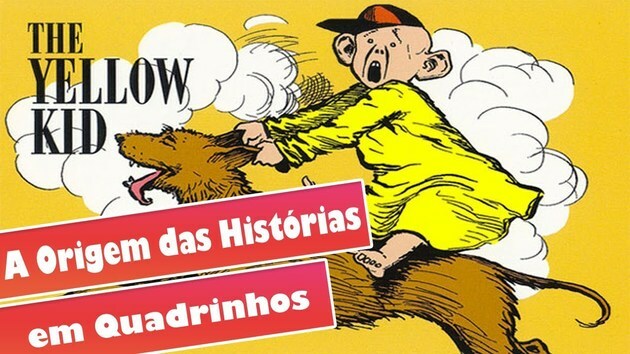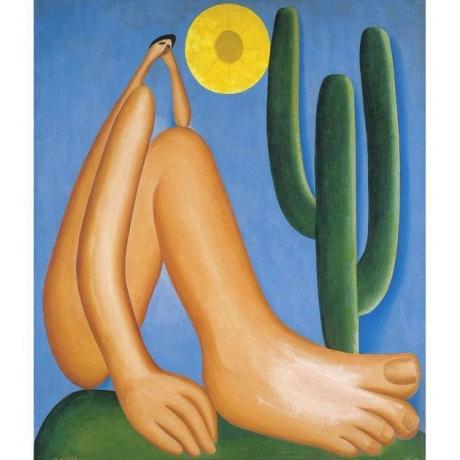Comics are one of the 11 types of art present in the world. Much appreciated by young audiences, they are a relaxed and fun way to tell stories.
What is Comics?
Comic book - or HQ - is the name given to the art of telling stories through sequential drawings and texts, usually horizontally.
These stories have the basic foundations of narratives: plot, characters, time, place and outcome. In general, they have verbal and non-verbal language.
Artists use various graphic resources in this textual genre to bring the reader "inside" the story told.
To communicate the characters' lines, for example, balloons with written texts are used. The shape of these balloons also conveys different intentions.

For example, balloons with solid lines suggest speaking in a normal tone; you balloons with dashed lines indicate that the character is whispering; you cloud-shaped balloons point thoughts; already the balloons with pointed lines exhibit screams.
Another widely explored feature is the onomatopoeias, defined as words that attempt to reproduce sounds. Example: “cabrum”, like the sound of thunder; “tic-tac”, like the sound of the hands of the clock, among others.
Letters of different types and punctuation marks are also explored, always seeking interaction with the reader.
The most used supports for the publication of comic books are newspapers, magazines and comic books.
Learn more about:
- Textual Genre Cartoon
- Textual Genre Charge
- Onomatopoeias
Origin of Comics
The first comic book with the characteristics we know today was published in the US in 1894 in a magazine called Truth. The author is American Richard Outcault. Months later, the newspaper New York World started to publish it officially.
This comic was called "The Yellow Kid" and narrated the adventures of a child who lived in the ghettos of New York, always dressed in a big yellow nightgown.
The character communicated in slang, in a very colloquial language, and brought reflections on consumer society and racial and urban issues.

Although this is considered the first comic book, it is important to highlight that some artistic manifestations that already existed for a long time served as an influence for the creation of the comic books.
As, for example, the paintings of the 14th century in Catholic churches depicting the Via Crucis. In them it is possible to observe the trajectory of the judgment and crucifixion of Jesus Christ through drawings made sequentially.
Comics in Brazil
In Brazil, the first comic book was called Tico-Tico and was published in 1905 by the periodical The Mallet.
Conceived by artist Renato de Castro, it was influenced by the French comic book La Semaine de Suzette and its most popular character was the boy Chiquinho.
But it was only in 1960 that the Brazilian public had a fully colored comic book, with the publication of THEPererê's class, by cartoonist Ziraldo. The comic was presented by Editora the cruise and brought characters inspired by the national culture.

In 1964, the comic book was withdrawn from circulation due to the censorship introduced during the military dictatorship and was only published again in 1975.
It was also in the 60s that the best known comic book in Brazil appeared, the Monica's Gang, created by paulistano Mauritius de Souza. The comic was so successful that today it is published in over 40 countries and translated into 14 languages.

Comics around the World
Comics are present all over the world and there are several emblematic characters.
One of them is Mafalda, creation of the Argentine cartoonist Quino in 1964. In this strip, the approximately 6-year-old girl has a reflective and questioning thought about the world reality, always bringing a humanist point of view about the situations.
Mafalda it is well known throughout Latin America and Europe and has become an Argentine symbol.

Another notable comic is Calvin and Hobbes (titled Calvin and Harold in Brazil). Created in 1985 by American Bill Watterson, the strips were shown in newspapers until 1995.
In it, the boy Calvin lives the greatest adventures and a deep friendship with the tiger Haroldo - who in reality is just a stuffed animal.

Graphic Novel
At graphic novels – Graphic Novel in Portuguese – are comic books that present content aimed at an adult audience. With long, dense and elaborate stories like novels, they often use books with neat editions, papers and high-quality prints as support.
An important example of this art form is the work bad, by Art Spiegelman, published in two parts, 1986 and 1991.
In this novel, the author narrates the memories of his family from the perspective of his father, who with his mother, went through the horrors of the holocaust in Nazi Germany. In history, Jews are represented by the figure of rats and the Nazis appear as cats.
In 1992, bad won the Pulitzer Prize of literature, offered to journalistic works. It was the first time that a comic book has gained this kind of recognition.

Read too:
- Types of Art
- What are Visual Arts?



